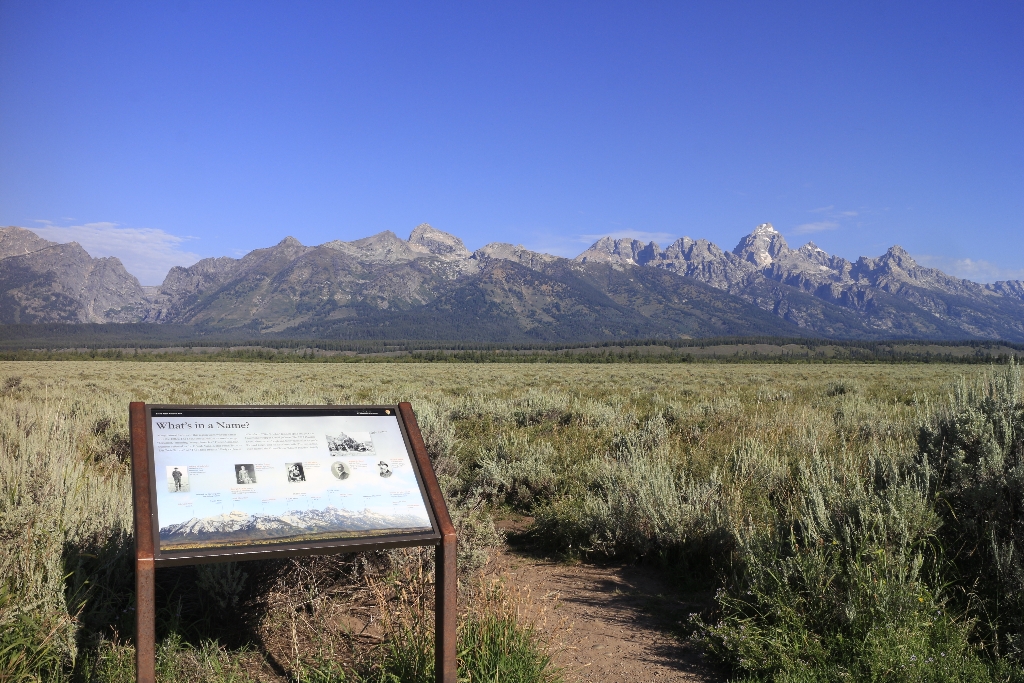
Albright Peak is the only mountain peak named for Horace M. Albright, the second director of the National Park Service.
Facing west, the southern Teton Range-dominated by Buck Mountain, Static Peak and Albright Peak-towers over the valley of Jackson Hole. Death Canyon slices deep into the range to the south of these peaks.
To the east, Blacktail Butte seems a minor hill but it still over 1,000 feet above the highway. The lack of trees on the south facing slopes of Blacktail Butte suggest past logging by settlers. The lack of trees, however, reflects the well-drained soils and exposure to the sun.
Name Origin
Horace Albright introduced John D. Rockefeller, Jr. to the area that became Grand Teton National Park in 1926. Albright, as superintendent of Yellowstone National Park, met with local business people in 1923 in Maud Noble's cabin setting in motion the recruitment of Rockefeller to help preserve and protect this landscape.
Biography of Horace Albright
Horace Albright was born in 1890 in California. In 1913, Albright graduated from the University of California, Berkeley and moved to Washington DC to begin working as a clerk for the Secretary of the Interior. Although he worked on park issues right away, his focus became nearly exclusively their issues in 1915. That year he became the assistant of newly hired Stephen Mather. In fact, Mather would not join the department unless Albright agreed to be his assistant in order to “’keep me [Mather] out of jail.’” Together they worked to create a parks bureau that resulted in the creation of the National Park Service (NPS) on August 25, 1916.
In 1917 Stephen Mather became seriously ill from what was likely bipolar depression. This made it so Mather was unable to do the duties as director of the newly formed NPS. During a span between 1917 and 1919, Albright served as acting director.
After Mather could return, Albright took up the jobs of superintendent of Yellowstone and NPS field director. As superintendent, Albright wanted to make Yellowstone a flagship of the agency and demonstrate how a park would be managed under the new National Park Service. Many of the current agency and park-wide policies and functions have roots with Albright. Two of the functions he helped found were visitor services and park museums. He was also instrumental in achieving the enlarged Grand Teton National Park of today.
After Mather suffered a stroke in 1929, Albright became the second director of the NPS. One of his most lasting contributions to the National Park Service was to get all the war department sites placed under NPS control. This solidified the agency’s place as the keeper of both the natural and cultural heritage of the United States of America.
In 1933, Albright left the NPS to work for the United States Potash Company. He retired from the company in 1956. Although he went into the private sector, Albright was always interested and involved in the affairs of national parks. He was even awarded the Presidential Medal of Freedom in 1980 for his involvement with the creation of the NPS. Albright died in 1987.
Is there something we missed for this itinerary?
Itineraries across USA


















































